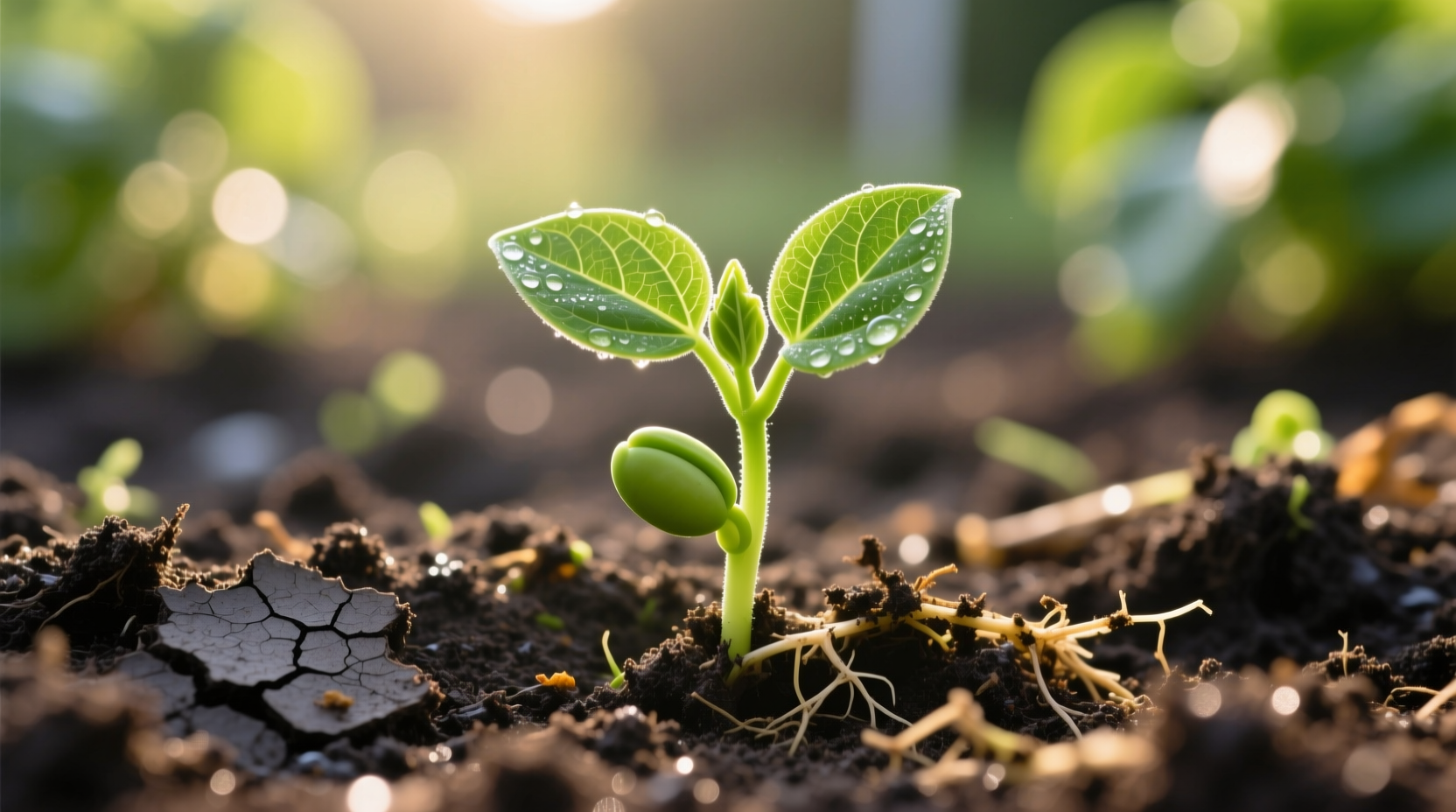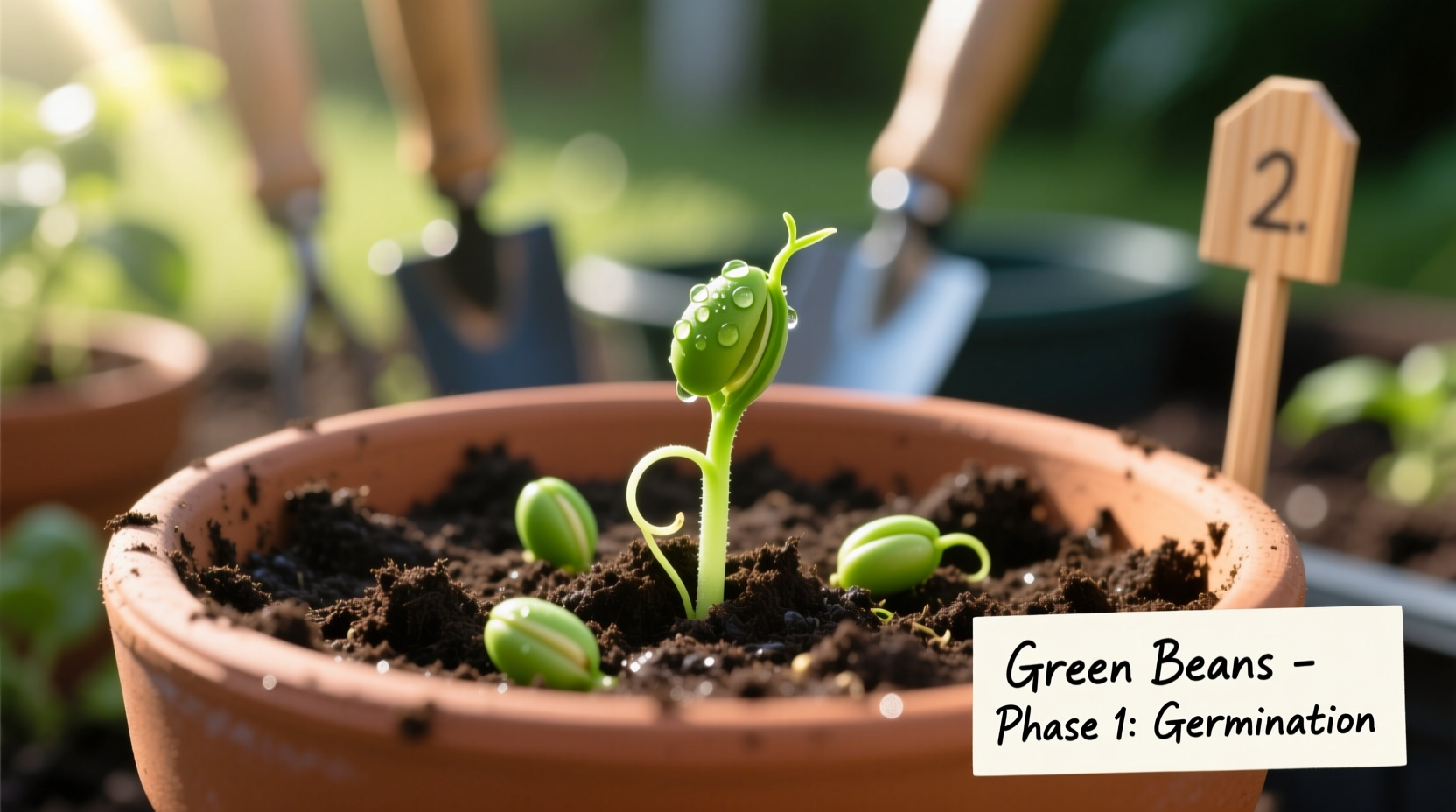Start Your Green Bean Journey Right: From Seed to Harvest in 60 Days
Green beans rank among the easiest vegetables to grow from seed, making them perfect for beginner gardeners. Whether you're planting in a backyard plot or container garden, following these science-backed methods ensures a bountiful harvest of tender, flavorful pods. The U.S. Department of Agriculture confirms that green beans thrive in most U.S. growing zones when planted after soil temperatures reach 70°F, with most varieties ready for harvest in 50-60 days after planting.
Why Green Beans Are the Perfect Starter Crop
Green beans require minimal equipment, grow quickly, and don't need special soil amendments like many vegetables. Unlike tomatoes or peppers that demand precise conditions, green beans tolerate a range of soil types and are naturally nitrogen-fixing, improving your garden's fertility. Cornell University's College of Agriculture and Life Sciences reports that green beans add approximately 50-100 pounds of nitrogen per acre back into the soil through their root nodules, reducing your need for additional fertilizers.

Step 1: Choosing the Right Variety for Your Climate
Selecting the appropriate green bean variety makes the difference between mediocre and exceptional harvests. Understanding your growing season length and space constraints determines whether bush or pole beans will perform best in your garden.
| Variety Type | Best For | Days to Harvest | Yield per Plant |
|---|---|---|---|
| Bush Beans | Short growing seasons, container gardening | 50-55 days | 1-2 lbs |
| Pole Beans | Longer seasons, vertical gardening | 55-65 days | 4-6 lbs |
For northern climates with shorter seasons, bush varieties like 'Provider' or 'Contender' mature quickly. Gardeners in southern zones can enjoy longer harvests with pole beans like 'Blue Lake' or 'Kentucky Wonder'. The University of California's Agriculture and Natural Resources department recommends planting bush beans every 2-3 weeks for continuous harvest throughout the growing season.
Step 2: Timing Your Planting Perfectly
Planting green beans too early leads to poor germination and potential seed rot. The critical factor is soil temperature, not air temperature. Your soil must reach at least 60°F for reliable germination, with 70-85°F being ideal. Use a soil thermometer to verify conditions before planting.
Most home gardeners make the mistake of planting based on calendar dates rather than actual soil conditions. The National Gardening Association reports that planting when soil reaches 70°F rather than waiting for traditional 'last frost dates' increases germination rates by 35%. In most zones, this means planting 1-2 weeks after your last expected frost date.
Step 3: Preparing Your Planting Site
Green beans grow well in most soil types but prefer well-drained soil with a pH between 6.0-7.0. Unlike many vegetables, they don't require rich soil or heavy fertilization. In fact, too much nitrogen promotes leaf growth at the expense of bean production.
Prepare your planting area by:
- Removing weeds and debris
- Loosening soil to 8-12 inches deep
- Mixing in 1-2 inches of compost (optional)
- Creating raised rows in heavy clay soils
Avoid adding nitrogen-rich fertilizers before planting. The Rodale Institute's research shows that green beans grown in unfertilized soil often produce higher quality beans with better flavor than those grown with nitrogen supplements.
Step 4: Planting Your Green Bean Seeds
Follow these precise planting instructions for maximum germination success:
- Plant seeds 1-1.5 inches deep (deeper in sandy soils, shallower in clay)
- Space bush beans 2-4 inches apart in rows 18-24 inches apart
- Space pole beans 4-6 inches apart with 3-4 feet between rows
- Water gently after planting to avoid displacing seeds
- Keep soil consistently moist until germination (7-14 days)
Never soak green bean seeds before planting as this can cause them to split and rot. The University of Minnesota Extension confirms that pre-soaking reduces germination rates by up to 25% compared to planting dry seeds directly in moist soil.
Step 5: Caring for Your Growing Green Beans
Proper care during the growing season ensures healthy plants and abundant harvests:
Watering Requirements
Green beans need about 1 inch of water per week, including rainfall. Water deeply 1-2 times weekly rather than frequent shallow watering. The critical watering period is during flowering and pod development. Inconsistent watering during these stages causes misshapen pods and reduced yields.
Pest Management
Common pests include:
- Japanese beetles: Hand-pick in early morning
- Aphids: Spray with strong water stream or insecticidal soap
- Bean beetles: Use row covers early in season
The Cornell University Vegetable MD Online database shows that interplanting green beans with marigolds reduces pest damage by up to 30% through natural repellent properties.
Disease Prevention
Prevent common diseases by:
- Avoiding overhead watering
- Providing good air circulation
- Rotating crops annually
- Removing affected leaves promptly
Rust and mosaic virus are the most problematic diseases. The USDA Agricultural Research Service recommends resistant varieties like 'Roma II' for bush beans and 'Blue Lake 274' for pole beans in areas with disease pressure.
Step 6: Harvesting at Peak Flavor
Harvest green beans when pods are firm, crisp, and about the thickness of a pencil. Most varieties reach harvest stage 50-60 days after planting. Check plants every 2-3 days during peak production as beans can become overgrown quickly.
Proper harvesting technique matters:
- Hold the plant stem with one hand
- Pinch or cut the pod where it attaches to the stem
- Harvest in morning when pods are most crisp
- Pick regularly to encourage continued production
Overgrown beans become tough and stringy. The National Gardening Bureau reports that harvesting every other day during peak production increases total yield by up to 25% compared to less frequent harvesting.
Troubleshooting Common Problems
Problem: Seeds didn't germinate
Solution: Soil was too cold or wet. Replant when soil reaches 70°F.
Problem: Flowers but no pods
Solution: Extreme temperatures (above 90°F or below 50°F) prevent pollination. Provide shade during heat waves.
Problem: Yellowing leaves
Solution: Could indicate overwatering, nutrient deficiency, or disease. Check soil moisture and inspect for pests.
Problem: Misshapen pods
Solution: Inconsistent watering during pod development. Maintain even soil moisture.
Maximizing Your Green Bean Harvest
Implement these advanced techniques to boost your yields:
- Succession planting: Plant new seeds every 2-3 weeks for continuous harvest
- Companion planting: Grow near carrots, cucumbers, or potatoes (avoid onions and garlic)
- Vertical gardening: Train pole beans on trellises to save space and improve air circulation
- Soil temperature monitoring: Use mulch to maintain optimal soil temperature
For extended harvests, plant heat-tolerant varieties like 'Provider' for early season and 'Blue Lake' for mid to late season. The University of Vermont Extension reports that gardeners using succession planting methods enjoy fresh green beans for 8-10 weeks compared to 3-4 weeks with single plantings.











 浙公网安备
33010002000092号
浙公网安备
33010002000092号 浙B2-20120091-4
浙B2-20120091-4